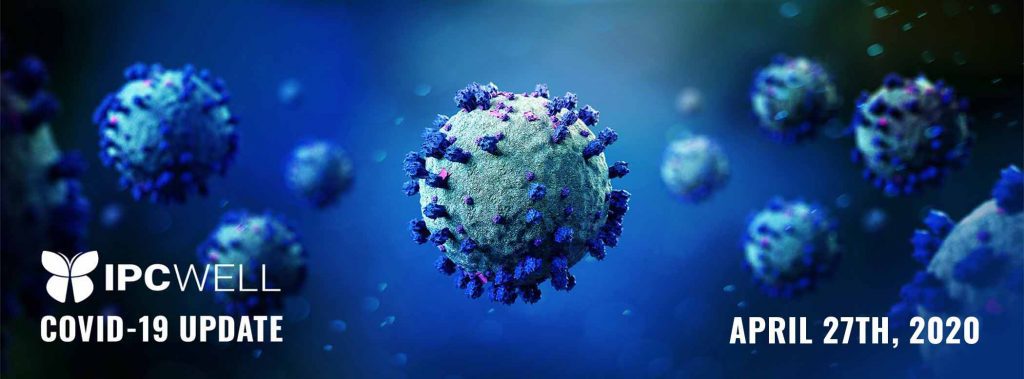As of April 25, 2020, the US now has 928,619 COVID-19 cases with 52,459 deaths. Most of us are in week 6 of stay at home executive orders with all non-essential medical procedures halted. Last Friday, April 24, 2020, Georgia took the lead in “Re-opening America”.
This week’s update will discuss what we as healthcare professionals need to consider and implement to provide the highest level of safe and effective care to our patients while keeping our healthcare workers and community protected.
- According to CDC, it is suggested that test-based strategies are preferred for return to work protocols. Staff should be included from work until:
- Resolution of fever without the use of fever-reducing medications, and
- Improvement in respiratory symptoms (e.g., cough, shortness of breath), and
- Negative results of an FDA Emergency Use Authorized molecular assay for COVID19 from at least two consecutive nasopharyngeal swab specimens collected ≥24 hours apart (total of two negative specimens)
- The alternative to the test-based strategy for excluding staff returning to work is:
- At least 3 days (72 hours) have passed since recovery, defined as resolution of fever without the use of fever-reducing medications and improvement in respiratory symptoms (e.g., cough, shortness of breath); and,
- At least 7 days have passed since symptoms first appeared.
Personal Protective Equipment:
- Ensure that all healthcare workers are wearing a mask during their shift.
- Verify that the staff have what they need such as hand sanitizer.
- Use PPE (gown and gloves appropriately). It is not appropriate to wear gloves throughout a shift as this can potentially cross-contaminate your environment.
- For inpatient settings, consider using reusable gowns as single use and laundering them.
- Use the CDC guidance for donning and doffing PPE in English and Spanish (posters):
- If you are short on PPE and have reached out to your vendors and local public health, and are still short. Please email IPCWell at admin@ipcwell.com. We are beginning a campaign to receive donations for PPE and may be able to help you out!
- If you are in need of N-95 fit testing, you can contact Karin Pena, PenaK@cintas.com, with CINTAS.
Infection Prevention and Control Practices:
- Validate hand hygiene practices. Take some time to observe staff to ensure they are conducting hand hygiene when appropriate such as before and after patient contact. Before and after donning and doffing gloves.
- Evaluate staff for COVID-19 symptoms at the beginning of their shift and then Q4 hours. Keep in mind some people who test positive for COVID-19 NEVER have a fever over 99.4 degrees. In addition, some people never have symptoms. Therefore, social distancing, hand hygiene, PPE use, and environmental cleaning are essential prevention measures.
- Increase cleaning and disinfecting to every few hours for high touch surfaces. Ensure ALL your cleaning products are on the EPA List N for COVID19
- For inpatient settings, if any patients/residents are leaving your facility for outside procedures, ensure they are wearing a face mask. When they return, they need to be isolated for 14 days. If you have the PPE, initiative droplet/contact precautions (gown, gloves, mask, face shield).
- For inpatient settings, ensure all patients/residents remain in their room, no communal dining or interactions (as best as you can).
Lab Testing/ Antibody Testing:
- URGENT! Not ALL laboratory tests are created equal. With the FDA emergency use authorization, some tests have a low accuracy (30-70%) true positive and true negative values. If you have patients/residents that are symptomatic and they have a negative test result, consider assuming they have COVID-19. If you continue to have negative results on symptomatic patients/residents, consider utilizing a different test.
- The U.S. Food and Drug Administration (FDA) recommends that health care providers continue to use serological tests intended to detect antibodies to SARS-CoV-2 to help identify people who may have been exposed to the SARS-CoV-2 virus or have recovered from the COVID-19 infection.


